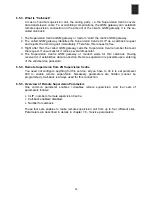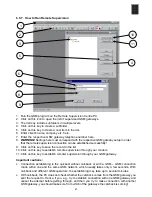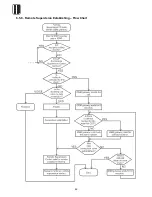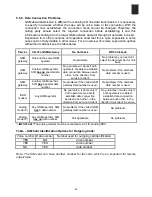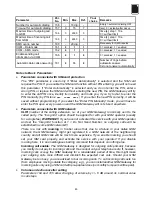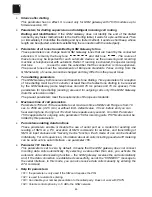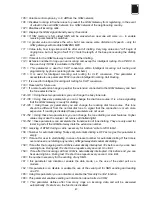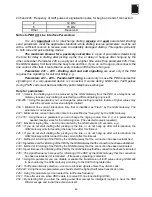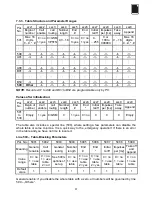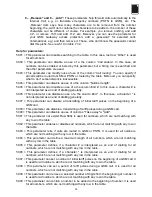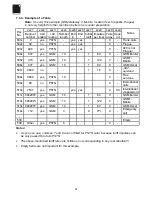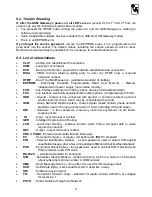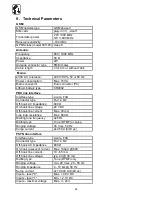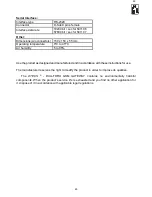
52
Par. 5003 - options of set up
0 = GSM
Route all calls to GSM without respect to table
1 = Use table
Route calls with respect to table, in case of network error don’t reroute them
2 = PSTN
Route all calls to PSTN without respect to table
3 = GSM
→
PSTN Route calls with respect to table, in case of GSM network error or data call
to GSM, reroute them to PSTN
4 = PSTN
→
GSM Route calls with respect to table, in case of PSTN network error, reroute
them to GSM
5 = PSTN
↔
GSM Route calls with respect to table, in case of PSTN or GSM network error,
reroute them to the second one.
Remarks and Explanatory Notes to Parameters
•
If you program the GSM Gateway using a PC, on each line you can add a comment
that is saved but not sent to the GSM Gateway.
•
The table has now 250 records; rows
A01 to A98 and B01 to B54 are programmable
only by PC.
•
Since the table is shared by several functions, the sorting must be detailed enough to
cover all purposes: if, for example, pseudo tariff metering is used, calls with different
cost have to be distinguished even if all of them are allowed.
1 – Number Beginning:
used for call type identification (GSM, trunk, free, etc.). The
„Number Beginning“ field in line 599 cannot be filled - the parameters on this line are
used automatically for all numbers, which are not found in table.
2 – Call Barring
: the parameter says whether the dialled number is allowed or barred.
3 –The most important parameter in this model:
tells, which way the call will be
routed. By setting of par. 5003 you can specify what to do if some network is
inaccessible.
4 – Number Length
: The parameter defines how long the number can be expected to be
for the given prefix. Therefore, the dialling into GSM network can start as soon as the
required number of digits is dialled. 0 means do not observe the number length –
enter zero here, if the number length is not fixed. If, however, the maximum number
length is known at least, you can enter it too.
5, 6 – Dialling End with ‘*‘ or ‘#‘:
These characters can be a part of dialling with some
prefixes (GSM services, e.g.). Here they cannot be used for terminating the dialling.
With other prefixes (fixed PSTN, e.g.) they are not used as a part of dialling, and here
they can be used for terminating the dialling. The GSM Gateway can then start
dialling as soon as the ‚*‘ or ‚#‘ character appears in the number.
Note:
If ‘
*’
or ‘
#‘
or the number length cannot be used for terminating the dialling,
then a timeout will be used (programmable).
7 – Starting Tariff:
Represents the minimum call cost. It is the number of tariff pulses
that are sent upon the call connection
additionally
(the pulses are transmitted
closely one after another). Works only with calls to GSM network.
8 – Tariff Pulse:
It is a time between two pulses – hence, the more expensive the call, the
lower the value. It is set in milliseconds to be as precise as possible – one step is 100
ms. a zero means do not send tariff pulses.
Works only with calls to GSM network.
Note:
It is safer to complete tariff rates with barred numbers too in case you enable
these numbers later.
Содержание ATEUS 501106E
Страница 2: ......
Страница 32: ...30 5 2 Description of GSM Gateway PCB ...
Страница 44: ...42 6 5 8 Remote Supervision Establishing Flow Chart ...
Страница 66: ......
Страница 67: ... 2004 2N TELEKOMUNIKACE a s Prague DR 1101 v 1 1 ...


